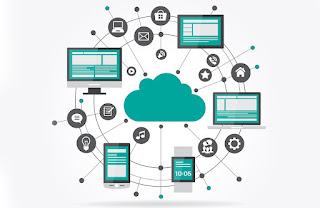Different Types of Wireless Communication with Applications
Wireless communication is currently one of the most rapidly evolving and dynamic technology domains in the communication world. Wireless communication is a way of delivering data from one point to the other without using wires, cables, or any other physical hardware.
In general, data is transmitted from transmitter to receiver over a limited distance. In wireless communication, the transmitter and receiver can be positioned anywhere between a few meters (like a TV remote control) to a few thousand kilometers (Satellite Communication).
We live in a world of communication, and wireless technology is a vital component of our daily life. Mobile phones, GPS receivers, remote controls, Bluetooth audio, and Wi-Fi use wireless techniques for communication.
Different types of Wireless Communication Systems
Individuals nowadays require mobile phones for a wide range of activities such as conversation, web browsing, multimedia, and more. Each of these services must be made available to the user when they are traveling. We can exchange audio, documents, videos, and photographs using wireless communication technologies.
Wireless Communication Systems also offer assorted services like virtual meetings, mobile communications, alerts, television, radio, and more. Diverse types of Wireless Communication Systems are created to meet the demand for a wide range of communication services.
The following are some of the most significant Wireless Communication Systems easily accessible:
Television and Radio Broadcasting
Radio is often acknowledged as the first wireless service to be broadcast. This is an example of a Simplex Communication System in which data is just carried in one direction and all users receive the same data.
Satellite Communication
A satellite communication system is a type of wireless communication that is extremely useful. Satellite Communication Networks give global connectivity irrespective of population density.
Satellite Communication Systems include communication (Satellite Phones), navigation (GPS) mapping, broadcasting, high-speed internet, and other services. Moreover, it is used for other wireless services such as cellular, television networks, and other radio technologies.
RADAR
RADAR is an electromagnetic sensor or detecting system used to track, locate, detect, and identify diverse types of objects at long distances. The above sensing technique works by directing electromagnetic radiation in the direction of objects known as targets, which then check for echoes. In this case, the targets may be ships, celestial bodies, airplanes, spaceships, automobiles, insects, and more.
Mobile Telephone System (Cellular Communication)
Mobile Phone Technology is undoubtedly the largest extensively employed wireless communication system. The invention of mobile cellular devices revolutionized the world like no other technology. Mobile phones nowadays are not limited to making voice calls; they now incorporate Bluetooth, Wi-Fi, GPS, and FM radio.
5G is the most advanced generation of mobile communication technology (which is indeed the successor to the widely adapted 4G). Apart from enhanced data transmission rates (technologists claim Gbps), 5G Networks are however targeted at Internet of Things (IoT) based technologies and upcoming automobiles.
WLAN (Wi-Fi)
Wi-Fi technology is low-powered wireless electronic communication. These are accessible in every shopping mall and restaurant around the world. A physically wired network is linked to a router. This results in an excellent focused and low-power wireless network.
This allows you to connect a wide range of devices to your local network. But a public wireless network connection is a prominent target for cybercriminals and attackers. As a result, both users who connect to these networks and carriers must deploy password encryption protection techniques.
Infrared Communication
In most residences, infrared communication is available in the form of a television remote control. But, how does it work?
IR uses invisible light to communicate data. This indicates that it is positioned between microwaves and visible light on the electromagnetic spectrum.
Infrared communication necessitates the use of a transmitter and a photo receiver to absorb the light beam. Any obstacle or disturbance to the light results in communication failure. This indicates that IR communication is only possible if the transmitter and receiver are in a straight line of sight.
Bluetooth
Bluetooth is a comparatively modern technology that is rapidly becoming extremely popular. It is just a simple mechanism of sending data over a small distance. This data, however, can incorporate either messages or files.
Bluetooth technology was first developed to eliminate traditional cables. It does, however, have certain drawbacks. It can reach a maximum distance of 30 feet. This can be lowered further, but it cannot be blocked by walls and other solid objects.
Radio Frequency Identification (RFID)
Radio Frequency Identification (RFID) is a type of wireless communication that employs electrostatic coupling to specifically detect a person, object, or animal in the RF section of the electromagnetic spectrum. It is implemented in industries such as manufacturing, healthcare, transportation, home applications, retail sectors, stock management, and many more.
Conclusion
Currently, there are multiple types of wireless communication available. Considering countless technologies & architectural configurations to complement services, it is important to conduct an extensive study and understand which wireless communication technologies will perform effectively for you or your business.
If you would like to implement wireless communication technology in your business or at any specific site, then VTPL is here to guide and support you. We combine our decades of expertise to deliver customers excellent recommendations and solutions. For comprehensive details contact us today to find out innovative and customized wireless communication solutions for your business.




Comments
Post a Comment